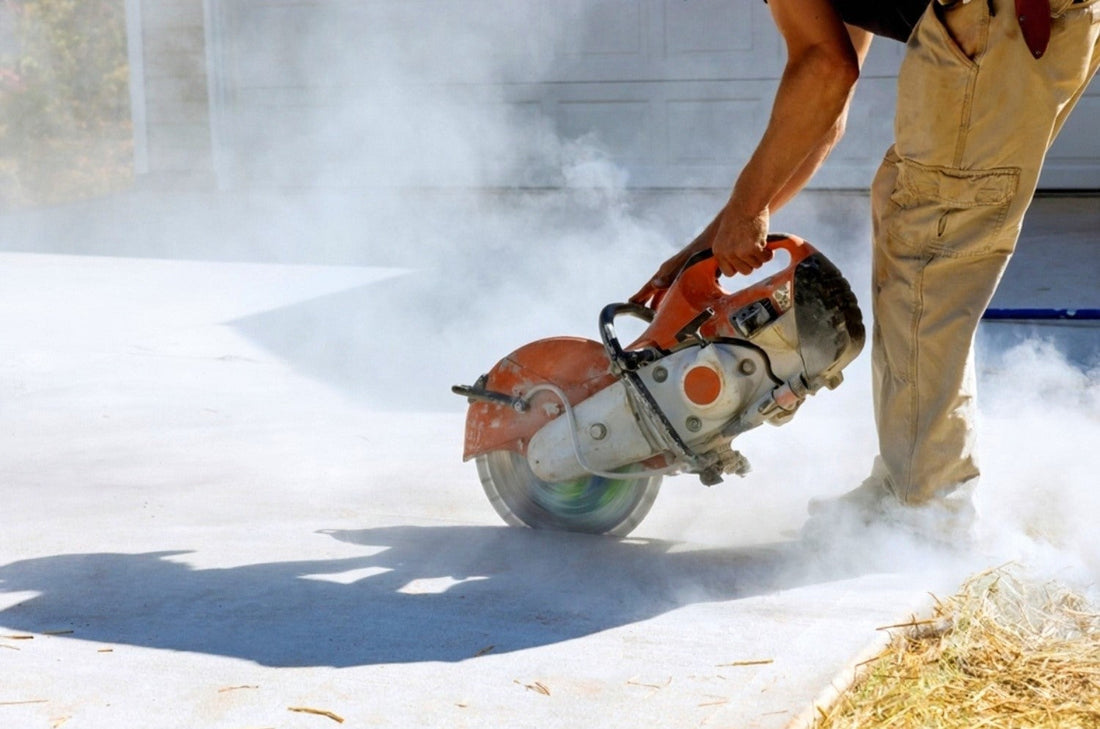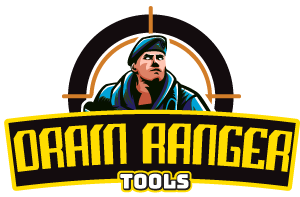
Concrete Cutting Safety 101: PPE, Risks, and Prevention
Share
Concrete cutting is an essential part of construction and renovation work. It helps construction workers reshape and remodel existing structures, create space for new ones, or make way for building repairs.
For instance, they cut through concrete slabs in walls to allow electricians to install wiring in a home. Concrete cutting also helps construction workers shape tiles for floors.
In dire cases, when there has been severe plumbing damage, plumbers also have to opt for the procedure of cutting concrete slabs and then getting the plumbing system entirely replaced or repaired.
However, there are some risks associated with the process. These risks refer to dust, noise, vibration, and blade hazards. That’s why they need to follow the relevant safety protocols, such as wearing safety gloves for cutting concrete, for example.
They also need to wear the right gear, or PPE equipment, to protect their health. Protecting their health also ensures that they can work for a long duration of time.
Let’s now understand the various risks, required PPE equipment, prevention and safety measures, and compliance requirements for cutting concrete.
What Are the Common Risks in Concrete Cutting?
Some of the common risks associated with concrete cutting include silica exposure, noise pollution, debris, and blade kickback. Plumbers and construction workers alike should also be careful of vibration-related injuries, electrical hazards, and kickback.
Silica Exposure
Silica exposure refers to the formation of fine silica dust that takes place during concrete cutting operations.
Silica is a shiny material that is normally found in concrete, sand, and stone. However, during cutting concrete slabs, this structure breaks down and leads to the formation of respirable silica, which is 100 times finer than normal silica and can easily enter your lungs, respiratory system, and nasal passages. It is quite a serious problem, as more than 2 million people in the USA are exposed to it.
Inhaling silica during concrete cutting operations leads to silicosis, lung cancer, Chronic Obstructive Pulmonary Disease, and kidney diseases. In fact, silicosis has been found to be quite a common issue.
Noise Pollution
Noise pollution refers to excessive noise over a prolonged duration for time that can be grating to the ears. Excessive noise means noise that is over the permissible limit of 70 dB.
Prolonged exposure to loud noises leads to stress, anxiety, and high blood pressure. You could also experience loss of hearing, sleep apnea, and speech interference.
Flying Debris
Flying debris refers to the bits of stone and other particles that are the result of cutting concrete. When you’re cutting a concrete slab, the edges of the blade break the concrete slab. This leads to dust and other particles being expelled.
The concrete chips could hit your eye or come into contact with your skin. If they hit your eye, they could cause physical pain or chemical irritation. And when they hit your skin, they could draw blood. So, wearing PPE kits along with protective eye gear and safety gloves for cutting becomes optimally important.
Kickbacks
Kickback refers to the recoil of the machine for cutting concrete. This takes place when the blade or saw of the machine is unable to cut through the concrete effectively.
Kickbacks can make your fingers or limbs come into contact with the blade or saw of the machine. This can lead to severe cuts, unintended amputations, or serious trauma.
Vibration Injuries
Vibration injuries refer to injuries that take place due to the frequent vibrations of the concrete cut machine. These could lead to long-term musculoskeletal injuries. The major type of vibration that you experience is Hand Arm Vibration. The constant stress on the bones of your arms and hands could lead to inflammation and pain, and soreness.
Electrical Hazards
Electrical hazards refer to the dangers of electrocution when or if you accidentally cut into a concrete wall with hidden wiring. You could also encounter hidden wiring when cutting through concrete floors. Apart from electrocution, you could also suffer from heart issues like irregular breathing and damage to the heart wall.
This is why you should wear the correct protective gear and also safety gloves for cutting concrete.
What PPE Equipment Do You Need for Effective Concrete Cutting?
Consider the table below to know what PPE equipment you need when using a cutting machine for concrete.
|
Part of Body You’re Protecting |
PPE Equipment Required |
Purpose of PPE Equipment |
|
Nose |
N95 masks or P2 respirators |
To prevent silica dust from entering |
|
Eyes & Face |
Safety goggles or face shields |
Prevents debris from hitting your eyes and causing redness and inflammation |
|
Ears |
Earplugs or earmuffs |
Protects you against noise pollution |
|
Hands |
Puncture and cut-resistant gloves |
Will prevent blood loss, and cuts due to kickbacks |
|
Footwear |
Steel-toe boots |
Protect your toes and feet from getting injured and stubbed |
|
Full body |
High-visibility clothing, long sleeves, and PPE suits when necessary |
Helps construction workers be visible on sites and prevent accidental vehicular injuries Long sleeves ensure that silica or other dust does not come into contact with skin PPE suits ensure that your full body or protected |
Table 1: Type of PPE Equipment Required During Concrete Cutting
What Prevention and Safety Best Practices Should You Follow When Cutting Concrete?
Both plumbers and construction workers should follow dust control, operator training, tool maintenance, training, and safe handling practices when cutting concrete. It is imperative that they always remain prepared for emergencies.
Effective Dust Control Measures
You should use the proper wet cutting methods, on-tool extraction, and HEPA vacuums to effectively control the dust.
Proper wet cutting methods include using the machine for cutting concrete as per the manufacturer’s instructions. You should also check that the water hose is securely connected to the machine and not broken or cracked.
This will ensure that the water flows with the right force. You should also adjust the nozzle effectively to direct the stream of water towards the cutting area. Don’t forget to clean up the slurry, which will otherwise dry to form silica dust.
You can clean this slurry with the help of an HEPA-filter-equipped vacuum. The HEPA filter removes unnecessary allergens and pollutants from the air.
Proper Inspection and Maintenance of the Concrete Cutting Tools
You should inspect your concrete cutting blades and saws daily to maintain them accordingly.
During your inspection, check all the components of the machine, including its belt, hose, blades, and other components. You should also clean the machine thoroughly to prevent the accumulation of dirt.
In case you see that the blade is not aligned appropriately, replace it immediately. Another thing you should do is carry out lubrication and greasing of the cutting machine for concrete. Remember to lubricate the machine in accordance with the areas specified by the manufacturer. You should also check the joints and bearings regularly.
Required Certifications
You should ensure that you pass the 201 course, which clears you for cutting concrete. This covers everything, from the setup of the equipment to its components and application. It also covers the usage of advanced concrete cutting tools, safe work practices, and how to troubleshoot problems.
Safe Handling
As a construction worker, you should learn how to safely handle the concrete cutting machine. Master the proper stance, grip, and cutting angle. For example, you should stand properly and maintain a firm footing.
Apart from that, you should avoid standing over the saw blade to prevent injuries due to kickback. You should also use the saw at shoulder blade level to prevent unnecessary strain on your hands.
Setting Up the Worksite Right
You should clearly demarcate the workplace with the help of barriers, like pylons, cones, and tape. This will prevent civilians from accidentally wandering in and getting injured. Apart from that, you should set up signs like ‘Men At Work’ or something similar.
Another thing you should do is ensure alternate sources of water and electricity. This will prevent people in the neighborhood from being deprived of the same if you’re cutting through water and electricity lines.
Being Prepared for Emergencies
You should keep first aid kits at strategic points around the concrete cutting area. In other words, they should be near the workers to ensure that the workers can easily reach them. Apart from that, you should also have the local first responders on your speed dial.
This will ensure that they can respond to any emergencies in under ten minutes.
What Legal and Compliance Requirements Do You Need to Adhere to When Cutting Concrete?
You should follow the OSHA-mandated regulations for both employees and employers to ensure your safety. Finally, you should carry out a quick series of checks, as seen in the checklist below, before beginning to cut concrete:
|
What You Should Check? |
(Yes/No)? |
|
Do you have the right PPE? |
Y/N |
|
Have you checked the machine and blade? |
Y/N |
|
Are dust suppression mechanisms in place? |
Y/N |
|
Are the barriers and warning signs set up around the workplace? |
Y/N |
|
Do you know where the first aid and emergency exits are? |
Y/N |
Table 2: Quick Safety Checklist for Workers Before Concrete Cutting
Wrapping Up
Concrete cutting carries serious risks if not handled correctly. This is why you should be aware of all the risks and follow all the prevention measures as outlined above. You should also follow all OSHA-mandated regulations.
Ready To Cut Concrete Safely?
Whether you’re a contractor, site manager, or DIY renovator, you should always prioritize safety. Invest in the right PPE, train your team, and follow best practices to cut concrete safely and efficiently.
Also, get in touch with us if you are in need of high-quality concrete cut machines.
Frequently Asked Questions
Q.1 How to Cut Concrete?
Ans. You can cut concrete with the help of the right machines for cutting concrete.
Q.2 How to Cut Concrete Pavers?
Ans. You can cut concrete pavers with a standard circular saw, equipped with a 4.5-inch blade.
Q.3 How to Cut Concrete Blocks?
Ans. You can cut concrete blocks with the help of concrete cutting blades with a 12–14-inch diameter.
Q.4 What Types of Concrete Cutting Equipment Can I Use to Cut Concrete?
Ans. The different types of concrete cutting machines you can use are concrete walls, slabs, and chainsaws. You can also opt for a ring saw. With regards to their source of power, you can opt for gas-powered, electric-powered, or battery-powered concrete cut machines.
